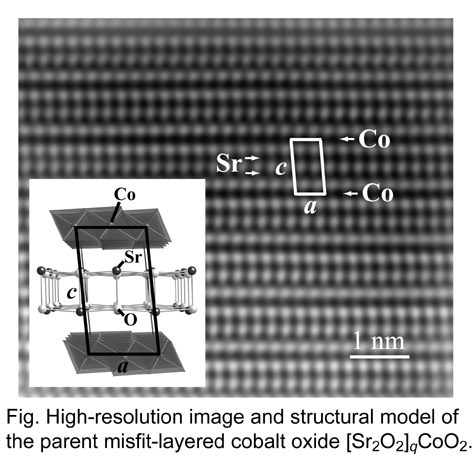
High Voltage Electron Microscopy Station, National Institute for Materials Science* Materials and Structures Laboratory, Tokyo Institute of Technology, Japan** Laboratory of Inorganic and Analytical Chemistry, Helsinki University of Technology, Finland*** Advanced Nano Characterization Center, National Institute for Materials Science, Japan**** Department of Resources and Environmental Engineering, Waseda University, Japan*****
○Takuro Nagai* Kei Sakai** Maarit Karppinen*** Toru Asaka**** Koji Kimoto**** Atsushi Yamazaki***** Hisao Yamauchi** Yoshio Matsui****
The crystal structure of a new Sr-Co-O phase was investigated through high-resolution electron microscopy (HREM) techniques [1]. We synthesized a sample in evacuated and sealed quartz ampoules at 850 oC from a mixture of SrO2 and Co3O4 powders with the ratio of 1:1 for Sr and Co. Electron diffraction (ED) measurement together with energy dispersive x-ray spectroscopy (EDS) analysis showed that the sample contains an unknown Sr-Co-O ternary phase with monoclinic symmetry and the cation ratio of Sr/Co = 1. A layered structure with a regular stacking of a CdI2-type CoO2 sheet and a rock-salt-type Sr2O2 double-layered block was observed in the HREM images; the phase is the parent of the more complex misfit-layered cobalt oxides of [MmA2Om+2]qCoO2 with the formula of [Sr2O2]qCoO2, i.e. m = 0 as shown in the figure. It was also revealed that the misfit parameter q is 0.5, namely, the two sublattices of the CoO2 sheet and the Sr2O2 block coexist to form a commensurate composite structure. We proposed a structural model with monoclinic P21/m symmetry, which was supported by simulations of ED patterns and HREM images based on dynamical diffraction theory. [1] T. Nagai et al., J. Solid State Chem. 179, 1898 (2006).
